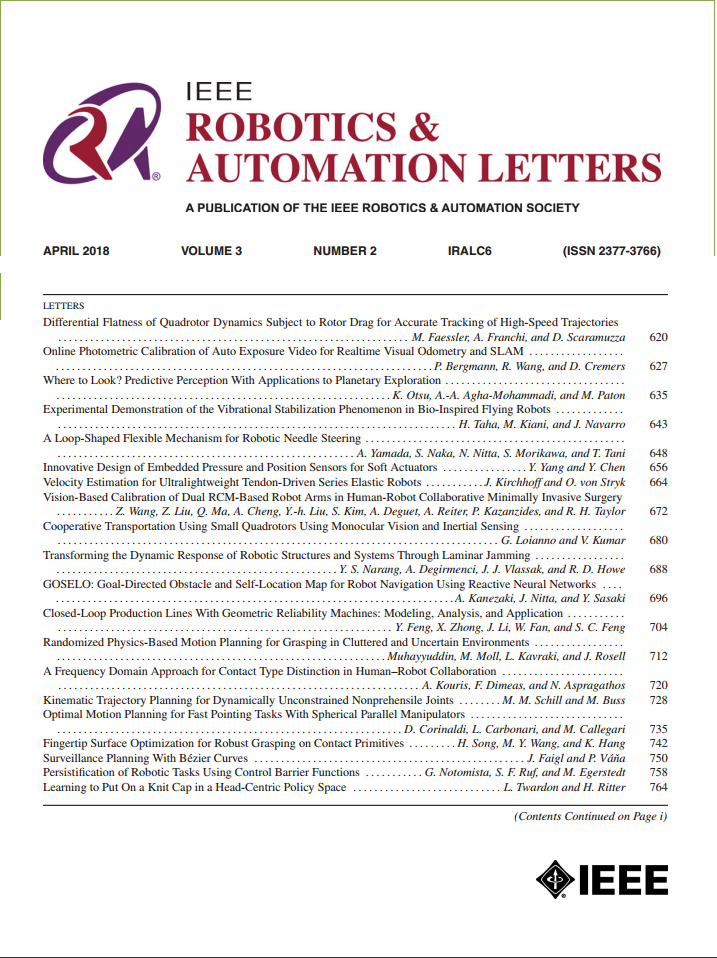MR-COGraphs: Communication-Efficient Multi-Robot Open-Vocabulary Mapping System via 3D Scene Graphs
IF 4.6
2区 计算机科学
Q2 ROBOTICS
引用次数: 0
Abstract
Collaborative perception in unknown environments is crucial for multi-robot systems. With the emergence of foundation models, robots can now not only perceive geometric information but also achieve open-vocabulary scene understanding. However, existing map representations that support open-vocabulary queries often involve large data volumes, which becomes a bottleneck for multi-robot transmission in communication-limited environments. To address this challenge, we develop a method to construct a graph-structured 3D representation called COGraph, where nodes represent objects with semantic features and edges capture their spatial adjacency relationships. Before transmission, a data-driven feature encoder is applied to compress the feature dimensions of the COGraph. Upon receiving COGraphs from other robots, the semantic features of each node are recovered using a decoder. We also propose a feature-based approach for place recognition and translation estimation, enabling the merging of local COGraphs into a unified global map. We validate our framework on two realistic datasets and the real-world environment. The results demonstrate that, compared to existing baselines for open-vocabulary map construction, our framework reduces the data volume by over 80% while maintaining mapping and query performance without compromise.基于三维场景图的高效通信多机器人开放词汇映射系统
未知环境下的协同感知对多机器人系统至关重要。随着基础模型的出现,机器人现在不仅可以感知几何信息,还可以实现开放词汇的场景理解。然而,支持开放词汇查询的现有地图表示通常涉及大数据量,这成为通信受限环境下多机器人传输的瓶颈。为了解决这一挑战,我们开发了一种方法来构建一个称为COGraph的图结构3D表示,其中节点表示具有语义特征的对象,而边缘捕获它们的空间邻接关系。在传输之前,使用数据驱动的特征编码器对COGraph的特征维度进行压缩。在接收到来自其他机器人的cograph后,使用解码器恢复每个节点的语义特征。我们还提出了一种基于特征的位置识别和翻译估计方法,使局部cograph合并为统一的全局地图。我们在两个真实的数据集和真实的环境中验证了我们的框架。结果表明,与现有的开放词汇表地图构建基线相比,我们的框架在保持映射和查询性能的同时减少了80%以上的数据量。
本文章由计算机程序翻译,如有差异,请以英文原文为准。
求助全文
约1分钟内获得全文
求助全文
来源期刊

IEEE Robotics and Automation Letters
Computer Science-Computer Science Applications
CiteScore
9.60
自引率
15.40%
发文量
1428
期刊介绍:
The scope of this journal is to publish peer-reviewed articles that provide a timely and concise account of innovative research ideas and application results, reporting significant theoretical findings and application case studies in areas of robotics and automation.
 求助内容:
求助内容: 应助结果提醒方式:
应助结果提醒方式:


